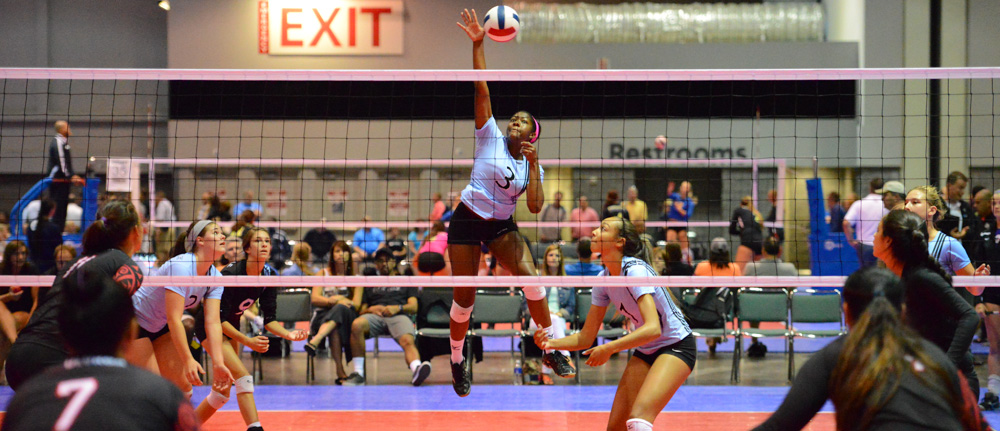

So how can one build a foundation for safe movement in competitive volleyball? I believe that question has two answers: core strength and weight lifting.
If you've spent time in the gym, you've seen the beginning volleyball team on the floor doing five pushups after not calling the ball. Trust me, it's painful to watch. Elbows flared out, hips sagging to the ground with backs bent like bows, just trying to get the job done before jumping up for the next point.
Until the athlete has the core strength to maintain a braced neutral spine while holding a plank from the elbows and eventually the hands, there's nothing to be gained (and much to lose) by attempting pushups.
Adequate core strength is essential to establishing and maintaining a stable spine, and establishing a stable spine is the foundation of moving safely.
While most coaches would agree that their players can benefit from increased core strength, my next recommendation may be a bit more controversial: weightlifting.
Weightlifting? You mean like powerlifting? Bodybuilding? All that musclebound stuff? My daughter?
Yes, weightlifting. But weightlifting with a specific process, and a specific purpose. Weightlifting that's not about how much you can lift, but about how you position and move yourself during the lift. Adding appropriate weight comes with time and experience, but remember -- it's the process, not the goal.
Here is the bottom line: volleyball is a repetitive sport. As it turns out, volleyball's most common motor patterns are closely correlated with four basic lifts. When you learn to master these four basic movements, you will have subconsciously ingrained healthy habits to support high performance play. With time, lifting builds strength -- and strength is good.
Want to learn how to establish a braced neutral spine while lowering yourself into a deeply flexed position, followed by explosive extension? You've just described the deadlift:
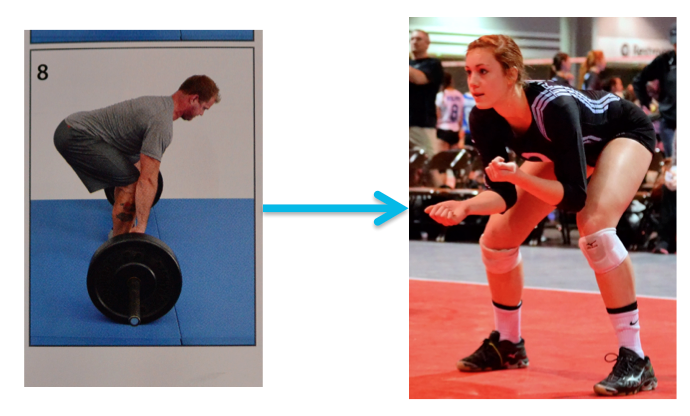 Photo from Supple Leopard
Photo from Supple Leopard
While all lifts have a component of spinal stabilization, the deadlift is one of the best exercises to teach the initiation and maintenance of proper spinal mechanics to protect the lumbar and thoracic spine. Volleyball's ready position and defensive play place tremendous demands on spinal stability that benefit from deadlift mastery.
Want to learn how to jump higher, while learning how to generate torque in your hips to protect your knees and ankles upon landing? You've just described the squat:
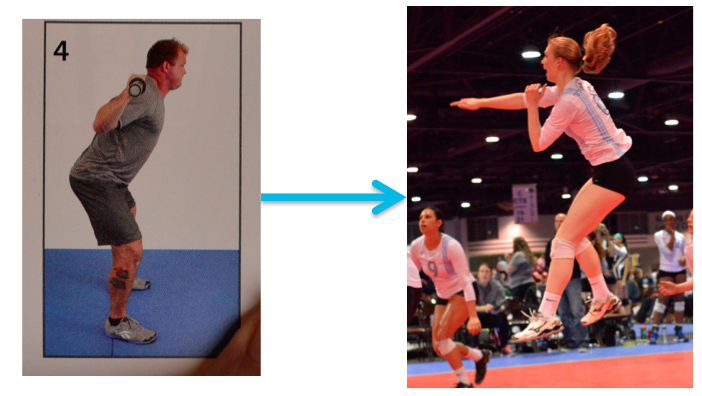 Photo from Supple Leopard
Photo from Supple Leopard
Proper squat performance builds both hip and ankle mobility, and generates torque from the hips to stabilize the knee, especially the ACL. Mastering the squat builds an instinctive awareness of how to execute a safe landing after a jump, and performing squats builds a reservoir of strength and mobility to support the athlete's hips, knees, and ankles under the pressure of competition.
Want to learn how to generate torque in the shoulders to establish and maintain a strong blocking position? You've just described the overhead press:
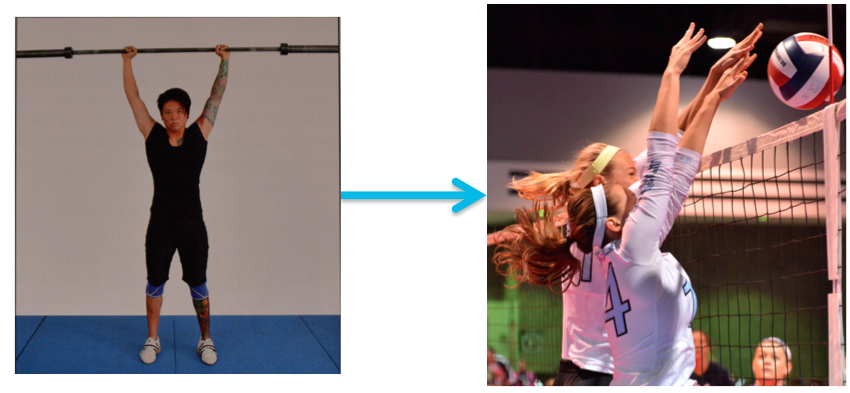 Photo from Supple Leopard
Photo from Supple Leopard
Along with the overhead press, do you want to strengthen your rotator cuff and build bilateral shoulder strength to combat the asymmetric demands of hitting? You've just described the bench press:
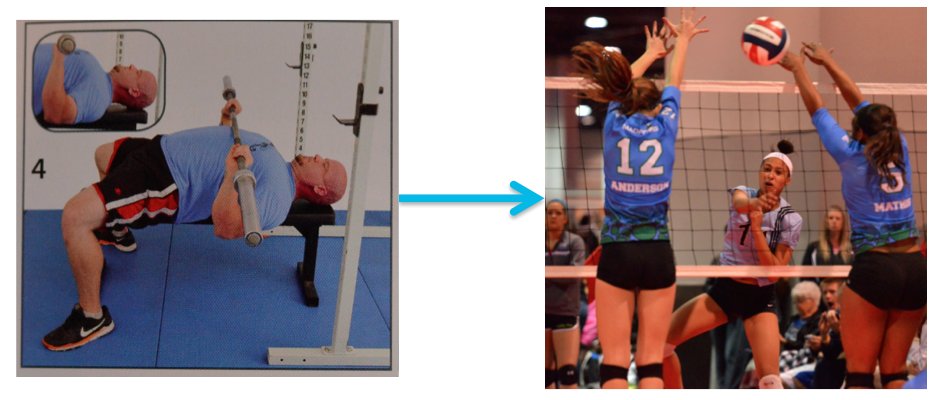 Photo from Supple Leopard
Photo from Supple Leopard
Alright, perhaps you're almost convinced that weightlifting has value. But you still have questions. Here are ones that I had to address before being personally comfortable with this approach for our daughters.
Q: Will this weightlifting cause reduced flexibility?
A: No. All of these lifts are full-body compound lifts that move the involved joints through their full range of motion. Isolation exercises performed with the goal of increasing muscle bulk can reduce flexibility, but compound exercises performed with strict attention to proper form throughout the full range of motion will increase overall mobility.
Q. Will this weightlifting cause excessive muscle hypertrophy?
A: No. Increased muscle bulk largely depends on nutrition, the body's hormonal environment, and the style of weightlifting. Without drugs or abnormal supplementation, athletes will not see an abnormal increase in muscle bulk due to lifting weights. Once an athlete has mastered the basic form of the lifts and is prepared to add additional weight, lifts should be performed using heavier weights for fewer repetitions (typically 3 to 5 repetitions per set). This "low rep" weightlifting builds the neuromuscular patterns for safe movement and increased strength through greater muscle fiber recruitment and greater metabolic efficiency, but without hypertrophy from increased glycogen storage. In contrast, "high rep" weightlifting used in bodybuilding can cause hypertrophy due to increased glycogen storage that results from lifting relatively lighter weights for more repetitions.
Q: Is weight training with free weights dangerous?
A: Any weightlifting without proper training in form and mobility can be dangerous. Your first and foremost goal should be learning to position and move throughout each lift safely and efficiently. Training starts with understanding of safe movement, and only adds weight to build a reservoir of strength once the fundamentals of safe movement are established.
Q: Aren't weight machines safer than free weights?
A: While using machines to isolate certain muscles and movements can require less training and supervision than free weight training, isolation training using machines does not develop the balance, core muscle strength, and overall neuromuscular coordination essential for injury prevention. Weight machines also have the potential to cause injury if not properly supervised as they may encourage or allow suboptimal movement patterns.
You may have noticed that three of the above exercises -- deadlift, squat, and overhead press -- correspond directly to basic motor patterns used in volleyball. While the fourth exercise, the bench press, doesn't correlate directly to hitting, it is a useful compound lift that complements the overhead press in strengthening the shoulders and upper body. It also allows the athlete to learn safe shoulder mechanics with a load that is less than her body weight, so that she can progress to safe and effective pushups.
Hitting is one of the most complex movements in volleyball, and as such receives significant attention in most training programs. We were fortunate that our daughters' club was an early adopter of the PowerCore 360 curriculum, which teaches athletes to generate power through core muscle engagement, thus reducing stress on the shoulder. Based upon our experience, I'd consider PowerCore to be an essential component of a complete volleyball curriculum.
At this point, let's add some additional detail to our idealized training hierarchy:
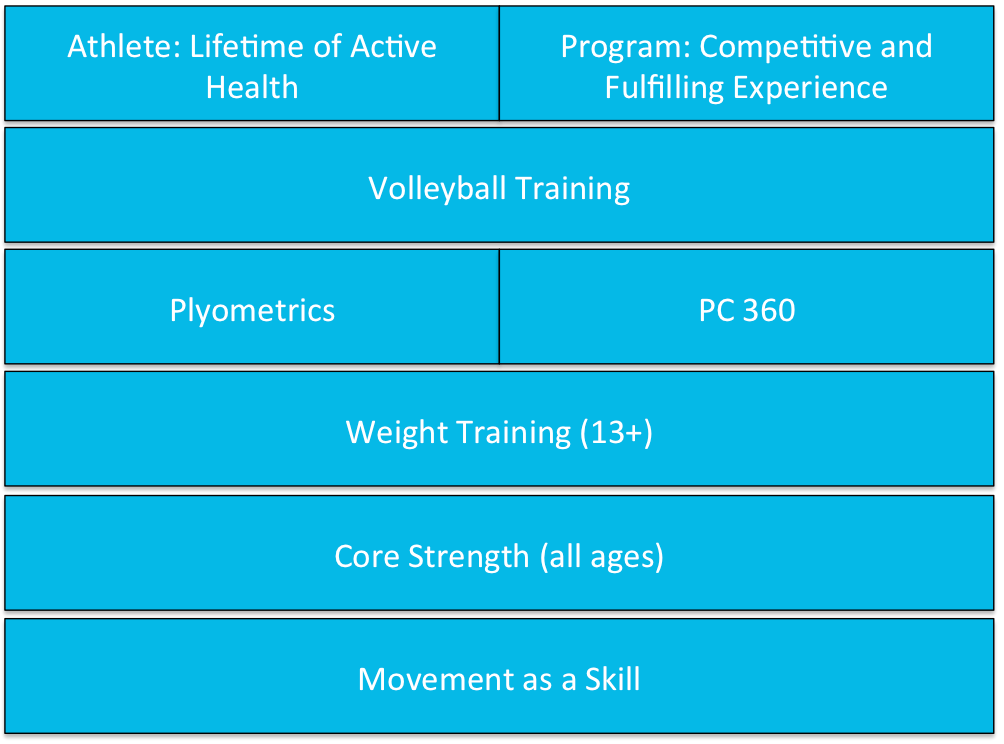
We've now added Core Strength and Weight Training to the base of our general conditioning, and then added more sport-specific elements in plyometrics (jump training) and PowerCore 360. Plyometrics is also a useful component, as both jump training and strength training have been found to reduce risk of knee injuries.
Ready to take the next step? Let's continue to our workout, and how to teach young athletes these four critical lifts.